Recently, Professor Zhou Ligong has published his painstaking work "Programming and Data Structure" for several years. The electronic version has been distributed to electronic engineers and college groups for free download. Authorized by Professor Zhou Ligong, the content of this book is serialized.
> > >> 1.1 classes and objects
Aristotle may be the first person to study the concept of type, he mentioned "fish and birds." The idea of ​​classifying all objects with common behaviors and characteristics into one class was directly applied in the first object-oriented language Simula-67, with the aim of solving the simulation problem. For example, a bank's cashier business, including a large number of objects such as cashier departments, customers, businesses, and currency units, group objects with the same data structure (attributes) and behaviors (operations) into one class, any object belonging to the class. All the properties of the class are shared, which is the source of the class.
Creating abstract data types is the basic idea of ​​OOP and can be used almost like a fully built-in type. Programmers can create types of variables and manipulate them. Each class has a total of members, each account has a balance, and each cashier can receive deposits. At the same time each member has its own status, each account has a different balance, and each teller has a name. Often in a computer, tellers, customers, accounts, and transactions are all described as unique entities. This entity is an object, and each object belongs to a specific class that defines its behavior and characteristics.
Thus, classes and class objects are not the same concept, similar to drawings and buildings, and the description of the object depends on the class that describes it. So you can create an object by creating an instance of the class, which is a variable that defines the class. This process is called instantiation.
> > > 1.1.1 Object
From the abstract perspective of human cognition, an object can be one of the following:
â— something that can be touched or seen;
â— something that is intellectually understandable;
â— Things that can guide thinking or acting.
Obviously, an object reflects the real existence of a certain part, so the object is something that exists in time and space. The term "object" in software first appeared in the Simula language, and the object exists in the Simula program to simulate some aspect of the real world.
Some objects may have clear conceptual boundaries, but represent events or processes that are not touchable. For example, a cube intersects a sphere, and their intersection is an irregular curve. Although it leaves the sphere or cube, it does not exist, but this line is still an object because it has a well-defined conceptual boundary.
Some objects may be touchable, but the physical boundaries are less clear. For example, rivers, fog, and people are objects of this type. Although attributes such as beauty and color are not objects, feelings such as love and hate are not objects, but these things may become attributes of other objects, for example, a man (an object) loves his wife (another object), Or a cat (another object) is gray. It can be seen that the attribute represents the information memorized by the object and can only be accessed and modified by the operation of the object.
When a traditional procedure module or function returns to the caller, there are no side effects, the module ends, and only the results are returned. When the same module is called again, it is like the first birth. The module has no memory of the existence of the past, just like human beings know nothing about the existence of the past.
As far as objects are concerned, an important feature of objects is that they act as containers for data, so objects have a memory function, and objects know its past. Usually, the data values ​​contained in the object properties are called the state of the object. When the caller of an object gives the object a message, if the caller or other caller asks the object to provide this information again, the object does not die after the execution ends, so the object has how to maintain its state (the state is The ability of an object to have a collection of values.
Suppose you are looking at a person and will definitely treat this person as an object. Obviously, everyone has data, such as name, birthdate, and weight; a person has behaviors, such as walking, talking, and breathing, so it can be said that the object is composed of "data and behavior." In the real world, since the state of each object is different, the state of the object can be represented by data stored in an object, and the data contains information that can distinguish different objects.
In OO programming, each object has a unique identifier, which is an object's property that distinguishes this object from all other objects. This unique identifier can be provided through the handle mechanism, so the object can be referenced by this handle. Different languages ​​implement handles differently, such as addresses, array subscripts, or artificial numbers.
In the real world, some objects have equivalents, such as ZLG, and others are conceptual entities. For example, solving one-dimensional equations, and some other objects, such as stacks and array variable names a, are for Introduced by implementation, there is no corresponding physical entity.
Many developers may think of "an object that contains another object" that is essentially different from "an object with pure data members", but those data members that don't seem to be objects are actually objects, such as , integer and double precision numbers. In a true object-oriented language, everything is an object, and even built-in data is an object, even if its behavior is just an operation.
Thus, although objects are things with well-defined boundaries, they are not enough to distinguish between different objects. Because each object of the same class has a different handle, each object may have a different state (referring to a different "value" stored in the variable) at any given moment, so the object is a state, behavior, and identity. Entity.
Objects are divided into persistent objects and active objects. The persistent objects refer to the lifetime of the program beyond the execution time of the program, while the long-standing and all operations are passively executed objects. Before the concept of active objects appeared, the object concept understood by people was only a passive object, that is, each operation of the object was passively responding to messages sent from outside.
When developing a system with multitasking concurrent execution, if there is only the concept of passive objects, it is difficult to describe multiple tasks in the system. In fact, concurrency is not only in the operating system, but now multiple tasks can be said to be everywhere. Each task should be implemented as an active program unit that can be executed concurrently. How to describe it?
If you use passive objects, you will not be able to describe objects that do not receive any messages and need to work actively. For example, the traffic lights in the traffic light control system, the sensors in the thermostat, their behavior is initiated, that is, the active object has at least An object that can be actively executed without receiving a message.
Although the activity of the object is found to analyze and recognize the problem from the specific things, people are actually not limited to the understanding of individual things, but the common features of a class of things, abstracting the object as class.
> > > 1.1.2
The concept of classes appeared long before Plato, and object-oriented programming continued this thinking just like the Western philosophers behind Plato. The concept of a class is closely intertwined with the concept of an object, because it has to be mentioned when discussing an object, but there are important differences between the two terms. Objects are concrete entities that exist in time and space, while classes represent only one kind of abstraction, so it can be said that the Validator class represents the common features of all validators. To determine a specific validator in this class, you must say "range value checker" or "parity checker".
In the context of object-oriented analysis and design, classes are defined as -- a class is a description of things in the real world, a class describes a set of objects that have the same attributes, behaviors, and relationship categories, and an object is an instance of a class. Therefore objects without common attributes and behaviors cannot be divided into one class. For example, a fairly high-level abstraction, a GUI framework, a database, and the entire system are conceptually separate objects, so they cannot be represented as a single class. Instead, these abstractions should be represented as a set of classes, working together through instances of these classes to provide the functionality we expect.
Such a set of classes is often referred to as a component, and a component is a pre-created program module that can be combined with other modules to form a program. Usually components are released in binary form, and their implementation is hidden from the user. If the component is well designed, the user doesn't even need to know what language the component is written in. However, components must expose at least one interface to be used. Usually, components will have multiple interfaces exposed. From the user's point of view, a component is a back-end server for some front-end interfaces, and the programmer manipulates the component through functions exposed by the component interface. Thus, the component extends the concept of object-oriented objects as service providers providing services through high-level interfaces.
In the real world, cookies are also objects. You must have a mold (class) before you can make a cookie of the shape you want, so you can think of a class as a template for an object. For example, only meet certain conditions in order to push values onto the stack, then the class verifier Validator is a range of values of the check RangeValidator class, OddEvenValidator classes and parity checker PrimerValidator prime number checker etc. Specific classes A collection of objects. Any object belonging to a class shares all the properties of the class. For example, all concrete validators have such properties - check parameters.
In OO programming, a class is an abstract data type, and users can also create their own classes, and can use this class as a data type. Once you have a class, you can define a variable with a class like you would with a normal data type. If you define the RangeValidator class, you can use it to define the variable rangeValidator. The variable rangeValidator of the RangeValidator class can have member variables or fields that represent the properties or properties of different validators, which are often referred to as data members.
(1) Values ​​and attributes
A value is a piece of data. A property describes a value that each object of the class has. It can be analogized—the object is like a value to the property. For example, name, birthdate, and weight are properties of the Person object, and color, modelYear, and weight are properties of the Car object. For each object, each property has a value. For example, the value of the property of the object ZhangSan, birthdate, is "21 October 1983", that is, ZhangSan was born on October 21, 1983. Different objects may have the same or different values ​​for a particular attribute. In a class, although the name of each attribute is unique, it is not necessarily unique among all classes. For example, both the class Person and the class Car may have a property called weight.
In the following, we will introduce a UML modeling language that describes classes in detail through attributes, a graphical language for visual representation, specification, construction, and description of components in software-intensive systems. It provides a graphical representation and management. An approach to an object-oriented software system. It is not only a representation of the system design, but also a tool to help complete the system design. The class diagram defines three different parts, the class name, properties, and methods that are used to explain the class being built. When creating an object model in UML, try not to include too much information in the class diagram so that you can focus on the overall design without focusing on the details.
As shown in Figure 4.1 shows the model-based representation showing one instance of an object class Person ZhangSan and are LiMing and objects (right) it describes the classes (left). The object's UML notation is a box in which the object name is followed by a colon and a class name. The object name and class name are underlined, and the object name and class name are specified in boldface. The UML notation of a class is also a box. It is also agreed to use a boldface to indicate the class name, put the name in the center of the box, capitalize the first character, and use a singular noun to indicate the class name. The class Person has the attribute name and birthdate, the name is string (string), and the birthdate is date (date). The name of an object in the class Person is "Zhang San", the birthday value is "21 October 1983"; the value of another object is "Li Ming", and the birthday value is "16 March 1950".

Figure 4.1 UML representation of attributes and values
UML notation enumerates attributes in the second box of the box, and each attribute can have options after it, such as type and default value. There is a colon before the class and an equal sign before the default. The convention displays the property name in a regular font, the names in the boxes are left-aligned, and the first letter uses lowercase. In the second box of the object box, it is also possible to include the attribute value, the representation is to list each attribute name, followed by the equal sign and the value, the same attribute value is also left-aligned, using the regular font. While some implementations require objects to have unique identifiers, these identifiers are implicit in the class model, ie they are not needed and should be explicitly enumerated, for example, PersonID: ID. Because most OO development languages ​​automatically generate identifiers, these identifiers can be used to reference objects; otherwise, they may need to be explicitly enumerated, otherwise objects cannot be referenced. But don't confuse internal identifiers with real-world attributes. Internal identifiers are purely an easy-to-implement approach and have no application implications. Conversely, taxpayer numbers, license plate numbers, and phone numbers are not internal identifiers because they have real meaning in the world of realization and are legal attributes.
(2) Operation and method
An operation is a function or procedure. For example, open and close are operations of a Windows class. All objects in a class share the same operation, so the behavior of what an object can do is called an operation, and usually the same operation is applied to many. Different classes are called polymorphism.
A method is an implementation of an operation that behaves as a member function of a class of OOP . For example, the class Validator has an operation validate, and its validation process is implemented by calling different functions with validate. For example, range value checksum parity. Although these methods logically perform the same task—data validation—the implementation code for each method will vary.
4.2 As shown in FIGS. RangeValidator class has attributes min and max, and wherein validate operation, min, max, and validate all of RangeValidator. A feature is a generic vocabulary that describes an attribute or operation. Similarly, OddEvenValidator has an isEven attribute and a validate operation.

Figure 4.2 UML representation of the operation
Note that validate() omits the input parameter in parentheses, which is "validate(pThis:void *, value:int):bool". One parameter of validate is pThis, its type is void *; its other parameter value, its type is int. When an operation has methods on several classes, these methods must have the same signature, that is, the same number and type of parameters, and the type of the return value.
The UML box represents a class with up to three cells. Each cell contains a class name, a property list, and an action list from top to bottom. The sash of the attribute and operation in the class box can be selected to show or hide, the missing attribute description does not specify the attribute, and the missing operation box indicates that no action is specified. Conversely, an empty sash means that the attribute is specified, but there is no display attribute.
The action list convention lists the operation names in regular fonts, left aligned, and lower initials. For example, the list of arguments and the type of the result of the operation, enclose the list of arguments in parentheses, and separate the arguments with commas. The result type has a colon before it, unless the parameter list in the parentheses is clear that there is no parameter, then you can't conclude.
(3) Customer and server models
In OOP, if a class exposes methods for other types of calls, then this class is known as a server, publicly These methods are called services, and call these classes is the customer service. In theory, the client class invokes the server class's service, ie the client sends a message to the server. The concept of client and server is relative. When class A provides a functional interface to class B, class A is the server, class B is the client; if class B also provides the function interface for class A, then class B is the server and class A is the client.
A well-designed server should hide its implementation details, and customers only need to know the interface provided by the server. The interface is the function that the client can call. These functions send the message to the server, then the server knows what kind of service the client needs, the server will return some data to the client, or perform the tasks required by the client.
(4) messaging and method calls
In OOP, classes and objects behave as servers, and modules that use classes and objects behave as clients. The customer requests the service in a special way. So how do you get objects to do useful things for us? There must be a way to make a request to the object so that it can do something, such as completing a transaction, drawing on the screen, or turning on a switch. Requests that can be made to an object are defined by its interface, which is defined by type.
Although the interface specifies what we can make to a particular object, there must be code to satisfy the request, plus the hidden data constitutes the implementation. The type has an associated function for every possible request, which is called when a request is made to the object. This process is summarized as "sending a message" (a request) to an object, and the object determines what to do (execution code) based on the message.
The logical interface between objects is implemented through messaging, which is an abstraction of communication between objects. A common method of message passing is to directly call an operation defined in the receiver object. For example, when object A calls a method of object B, object A is sending a message to object B, and the response of object B is defined by its return value. , but only the public methods of the object can be called by another object.
Loose coupling can be achieved using messaging, especially during the analysis phase, without specifying the details of the interface, such as synchronization, function call formats, and timeouts. Once you have fully understood all the issues, you can decide on the details of the design and implementation. Usually the object interface can be seen as a contract between the object and the external world. The contract is defined by a set of protocols, and the objects participate in these protocols. Interface protocols include preconditions, postconditions, and invariants.
The precondition is a condition that must be established when the operation is called. That is, you should verify that the incoming parameters are correct before calling, and only execute the method correctly. That is to say, the condition must be guaranteed to be true before the message is sent or received, which is the responsibility of the sender of the message. Once the verification method through the preconditions must be executed and the execution result must be guaranteed to conform to the contract, this is the postcondition. That is to say, the postcondition is a condition that must be established when the operation is completed. That is, it must be guaranteed to be true when processing the message, which is the responsibility of the recipient of the message. Invariants are conditions that must be established at any time, including before, during, and after the execution of the operation.
(5) attribute abstraction and behavior abstraction
The OO programming idea can use abstract methods to generalize and analyze multiple concrete objects in the real world, get the common attributes and behaviors of such objects, and describe them to form classes. Although they are all objects of the same class, each object has different properties, so different concrete object entities are formed.
Abstraction is generally divided into attribute abstraction and behavior abstraction. Attribute abstraction is to find the attributes common to a class of objects. For example, in the range value verifier RangeValidator class, use the integer variables min and max to describe the value pushed to the stack. The scope, then the min and max variables are used as member variables of the class to describe the properties of the object, ie "attributes are variables contained in the object". The behavior abstraction is to find the common behavior characteristics of such objects. For example, the range value check is performed on the value pushed from the stack. Similarly, the corresponding function can be added to the class, and finally the function is used as a class. A member function describes the behavior of an object, that is, "a method is a function contained in an object."
In process-oriented programming, a program is composed of modules. A module is a process, usually using a top-down design approach. Object-oriented programming and design focus on solving some problems in process-oriented programming and top-down design. Because the basic unit of module in object-oriented programming is class, not process, object-oriented design is Object-oriented programming design method, which focuses on the design of the class, completes the modeling task of the entity through the design of the class. The purpose of class modeling is to describe the object.
In process-oriented programming, when describing an object, the data and methods are separate. For example, when sending information over the network, only relevant data is sent, and the program at the other end of the network knows how to handle it. That is to say, if there is no handshake protocol between the two, the program on the other end of the network does not know how to handle it. An object can be defined as an instance of "concurrently containing" data and behavior by bundling data and behavior through an encapsulation mechanism to form a complete object with attributes and behavior. For example, when an object is transferred over a network, the entire object is transferred. So the program using OO technology is actually a collection of multiple objects. The "simultaneous inclusion" here is an important difference between OO programming and process-oriented programming.
It can be seen that in the future, when analyzing new objects, we must abstract and generalize from two aspects of attributes and behaviors, extract the common features of objects, and the whole abstraction process is a concrete to general process. If abstraction is to extract the common features of many objects into member and member functions of the class, then the encapsulation mechanism is to organically combine these features into a complete class.
> > > 1.1.3 Packaging
Classes and objects are both independent concepts and closely related. Each object is an instance of a class, and each class has zero or more instances. For almost all applications, classes are almost static. This means that once an object is created, its class is determined.
Although the most challenging is how to determine the class and object , as long as the correct use of Ogject Oriented Analysis (OOA) and Object Oriented Design (OOD) can get valuable domain models and design models . What is the relationship between OOA, OOD and OOP? The results of OOA can be used as a model for OOD, and the results of OOD can be used as a blueprint to implement a system using the OOP method.
In OOA and OOD, there is no need to consider specific language mechanisms. “The key is to find and solve business problems and complete conceptual analysis and design. In the early days of OOA and OOD, there were two main tasks for developers:
â— Identify the class from the vocabulary of the requirement;
â— Create structures that let multiple sets of objects work together to provide behavior that meets your needs.
Usually we refer to such classes and objects as the key abstraction of the problem domain, that is, the key abstraction reflects the vocabulary of the problem domain, which can be found from the problem domain, or it can be invented as part of the design; these collaborative structures are called implementations. Mechanism, which considers collaborative activities between many different types of objects.
Determining key abstractions involves two processes: discovery and invention, and by communicating with domain experts (users), you will discover the abstractions used by domain experts. If the domain expert mentions it, then this abstraction is usually very important, for example, the range value checker RangeValidator. The invention is the process of creating new classes and objects. Although they are not necessarily part of the problem domain, they are also important in design or implementation. For example, micro databases, linked lists, stacks, queues, etc. These key abstractions are the result of a specific design and are not part of the problem domain. So in the design process, developers not only need to consider the design of a single class, but also how the instances of these classes work together and use the scenario-driven analysis process. Thus, the key abstraction reflects the abstraction of the business domain, and the mechanism is the soul of the design.
Suppose you want to push to the value in the stack, you can either perform range value verification or even parity. From an object-oriented perspective, we first find the object from the description of the problem. When we find the object, we then begin to analyze the properties and behaviors of these objects through commonality and difference, and then encapsulate it with object-oriented encapsulation mechanism. Into the class.
According to the description of the problem, the range value checker is a RangeValidator concrete class whose attributes are range value check parameters min and max, and its behavior is to push the value that meets the range requirement to the stack. So as long as the properties and behavior of RangeValidator are encapsulated into the structure as members, the RangeValidator class is formed, which is the easiest and most easy way to understand C programmers for process programming.
To support this style, C allows the method to be declared as part of a structure, so it is easy to manipulate the data stored in the structure, as shown in Listing 2.18 .
Listing 4.1 value range class interface checker
1 typedef struct _RangeValidator{
2 bool (*const RangeValidate)(struct _RangeValidator *pThis, int value);
3 const int min;
4 const int max;
5 }RangeValidator;
6
7 RangeValidator rangeValidator;
The first letter of the class name is uppercase, and the first letter of the object name is lowercase. Thus, by extending the concept of existing structures, a new concept is created—classes, like classes , defining a class is creating a new data type. Although declaring a class's variables is the same as declaring a structure's variables, a variable that declares a class is called an object, so a class can declare an object rangeValidator of the RangeValidator class . Usually called the rangeValidator object is an instance of the RangeValidator class , which is the process of creating an instance of the class.
When performing range value verification, first need to judge whether the value value meets the requirements ? The implementation of the validateRange() function interface is shown in Listing 2.19 .
Listing achieve a range of values of the check function interface 4.2
1 bool validateRange(RangeValidator *pThis, int value)
2 {
3 return pThis -> min <= value && value <= pThis -> max;
4 }
The definition of the even checker OddEvenValidator concrete class and object oddEvenValidator is detailed in Listing 2.20 .
Listing 4.3 even parity class interfaces
1 typedef struct _OddEvenValidator{
2 bool (*const OddEvenValidate)(struct _OddEvenValidator *pThis, int value);
3 bool isEven;
4 }OddEvenValidator;
5
6 OddEvenValidator oddEvenValidator;
When performing even parity, it is also necessary to determine whether the value of the value meets the requirements ? The implementation of the validateOddEven() function interface is shown in Listing 2.21 .
Listing achieve parity interface function 4.4
1 bool validateOddEven(OddEvenValidator *pThis, int value)
2 {
3 return (!pThis -> isEven && (value % 2)) || (pThis -> isEven && !(value % 2));
4 }
Obviously, no matter what the verifier is, the commonality is the value value legality judgment, so you can share a function pointer, that is , the special function pointer types RangeValidate and OddEvenValidate are generalized to the general function pointer type Validate . Second, since each function has a pThis pointer to the current object, the special struct types RangeValidator * and OddEvenValidator * are generalized to void * types, accepting any type of data :
1 typedef bool(*const Validate)(void *pThis, int value);
2 typedef struct{
3 Validate validate;
4 const int min;
5 const int max;
6 }RangeValidator;
7
8 typedef struct{
9 Validate validate;
10 bool isEven;
11 }OddEvenValidator;
See Listing achieve parity generalization interface 2.22.
Listing 4.5 validators achieve universal interface (validator.c)
1 #include "validator.h"
2
3 bool validateRange(void *pThis, int value)
4 {
5 RangeValidator *pRangeValidator = (RangeValidator *)pThis;
6 return pRangeValidator -> min <= value && value <= pRangeValidator -> max;
7 }
8
9 bool validateOddEven(void *pThis, int value)
10 {
11 OddEvenValidator *pOddEvenValidator = (OddEvenValidator *)pThis;
12 return (!pOddEvenValidator -> isEven && (value % 2)) ||
13 (pOddEvenValidator -> isEven && !(value % 2));
14 }
For ease of reading, Listing 4.6 shows the interface to the range value verifier and parity.
Listing 4.6 universal calibration Interface (validator.h)
1 #pragma once;
2 #include
3
4 typedef bool(*const Validate)(void *pThis, int value);
5 typedef struct{
6 Validate validate;
7 const int min;
8 const int max;
9 }RangeValidator;
10
11 typedef struct{
12 Validate validate;
13 bool isEven;
14 }OddEvenValidator;
15
16 bool validateRange(void *pThis, int value);
17 bool validateRange(void *pThis, int value);
18 #define newRangeValidator(min, max) {(validateRange), (min), (max)} // Initialize RangeValidator
19 #define newOddEvenValidator(isEven) {{validateOddEven}, (isEven)} // Initialize OddEvenValidator
This interface consists primarily of all operational declarations that apply to all objects in this class, as shown in Figure 4.3 .

Figure 4.3 Class diagram
Taking the range value checker as an example , assuming min=0 , max=9, the use of a macro named newRangeValidator to initialize the structure is as follows:
RangeValidator rangeValidator = newRangeValidator(0, 9);
Note that the RangeValidator class is defined at compile time , and the rangeValidator object is created as an instance of the class at runtime. The macro expands as follows :
RangeValidator rangeValidator = {{validateRange}, (0), (9)};
It is equivalent to :
rangeValidator.validate = validateRange;
rangeValidator.min = 0;
rangeValidator.max = 9;
If there are the following definitions :
Void * pValidator = &rangeValidator;
The min and max of the RangeValidator can be referenced by pValidator . The calling function is called as follows :
(RangeValidator *)pValidator -> validate(pValidator, 8);
The premise of the above call form is that the pValidator is known to point to the determined structure type . If the pValidator will point to the unknown validator , obviously the above call form cannot be generalized , so how to call it ?
Although the type pValidator & rangeValidator.validate not the same, but their values are equal, it is possible to use this characteristic acquisition ValidateRange () function's address. which is:
Validate validate = *((Validate *)pValidator);
The form of its call is as follows:
Validate(pValidator, 8);
OCP according to the principle of opening and closing, due not allowed to modify push () function, so you need to write a generic extension pushWithValidate push function (function, see Listing 4.7).
Listing 4. 7 pushWithValidate ()
1 bool pushWithValidate(stackADT stack, void *pValidator, int value)
2 {
3 Validate validate = *((Validate*)pValidator);
4 if (pValidator && !validate(pValidator, value)){
5 return false;
6 }
7 return push(stack, value);
8 }
Among them, stack is a pointer to the current object (stack), used to request the object to perform some operations on itself, and the member variable of the structure is to find the object to which it belongs by the stack pointer. pValidator is a pointer to the validator. If no validation is required, pValidator is set to NULL and returns true.
The generic validator sample program using the validator.h interface is detailed in Listing 4.8 .
Listing 4.8 uses a universal calibration sample program
1 #include
2 #include"Stack.h"
3 #include"validator.h"
4 // Add the pushWithValidate() function
5 int main(int argc, int *argv[])
6 {
7 stackADT stack;
8 int temp;
9
10 stack = newStack();
11 RangeValidator rangeValidator = newRangeValidator(0, 9);
12 for (int i = 0; i < 16; i ++){
13 pushWithValidate(stack, &rangeValidator, i);
14 }
15 while (!stackIsEmpty(stack)) {
16 pop(stack, &temp);
17 printf("%d ", temp);
18 }
19 printf("");
20 OddEvenValidator oddEvenValidator = newOddEvenValidator(true);
21 for (int i = 0; i<16; i++){
22 pushWithValidate(stack, &oddEvenValidator, i);
twenty three }
24 while (!stackIsEmpty(stack)) {
25 pop(stack, &temp);
26 printf("%d ", temp);
27 }
28 freeStack(stack);
PCD Ball Nose End Mills
PCD Ball nose end mills means that the main deflection angle varies continuously from 0 to 90 degrees, depending on the depth of cut. The cutting edge of this insert is very strong, because the chips generated in the direction of the long cutting edge are relatively thin, so it is suitable for a large feed amount, the direction of the cutting force along the radial direction of the insert is constantly changing, and the pressure generated during the processing. Will depend on the depth of cut. The development of the geometric geometry of the modern blade makes the circular blade have the advantages of smooth cutting effect, low power requirement for the Machine tool and good stability. Today, it is no longer an effective roughing cutter, and it has a wide range of applications in face milling and end milling.
PCD Ball nose end mills are used for a wide range of applications such as shoulder milling, slotting and contoured surface milling. Compared with Carbide End Mills, PCD End Mills have the following obvious advantages:
â—Allow faster speed and feed;
â—High stability and it can improve workpiece quality with tight dimensional
â—Especially suitable for machining aluminum, copper and other metals with ultra-precision mirror grinding
â—Optimizes machine tool efficiency by increasing production capacity
PCD End Mill
PCD Ball Nose End Mill
PCD Thread Milling Cutter
Flexible in order quantity:
Samples can be provided before mass production, and MOQ can be discussed accordingly.
PRODUCT DETAIL:
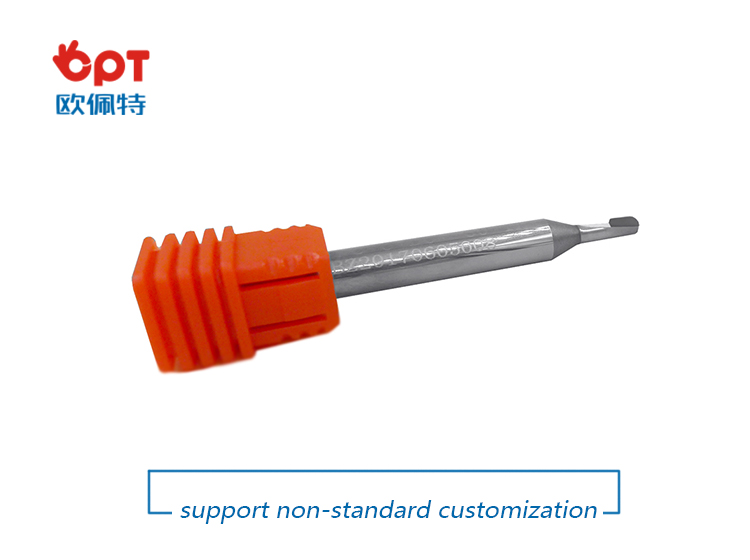
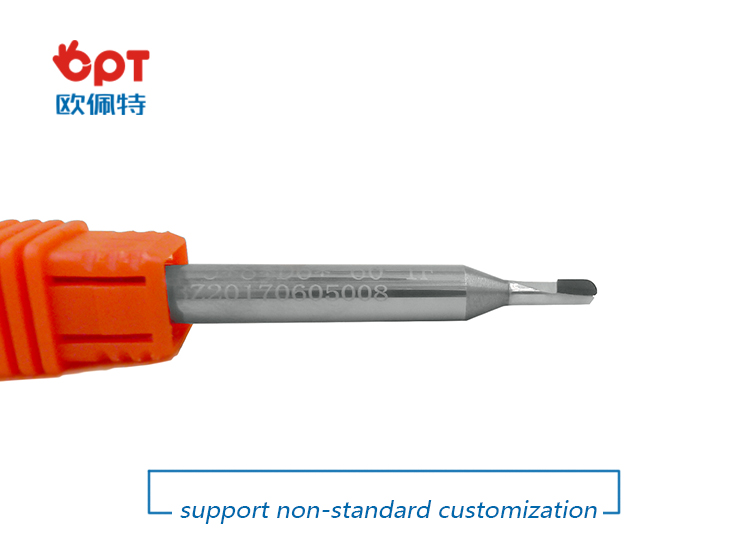
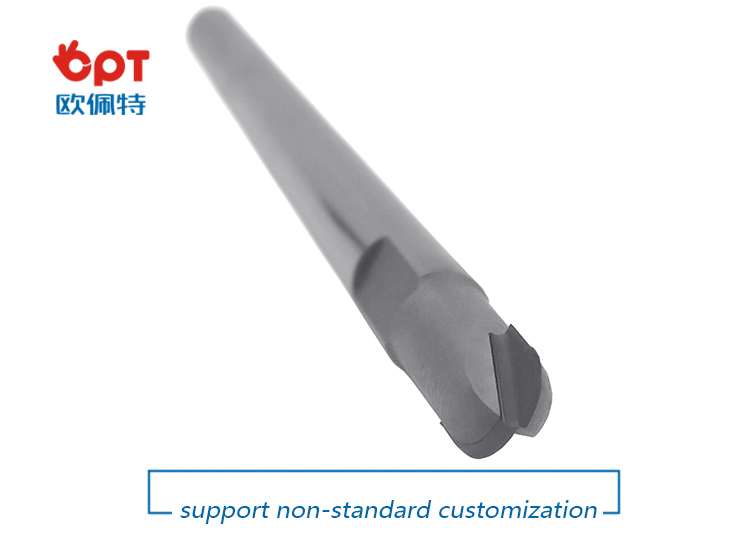
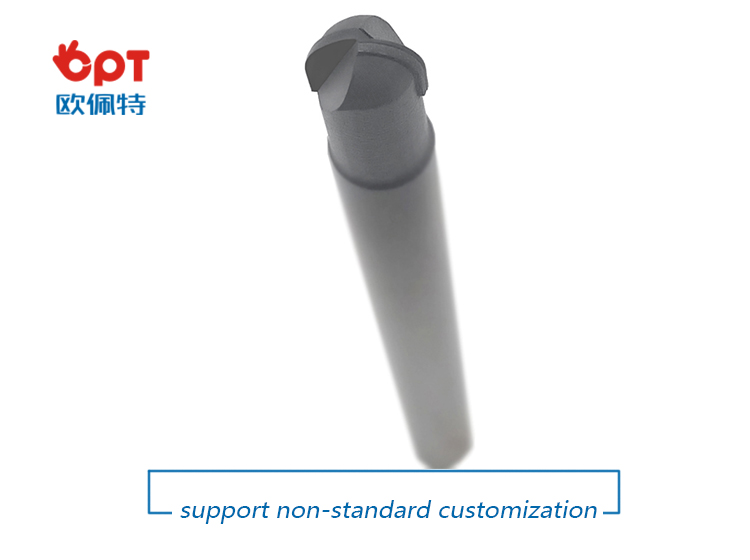
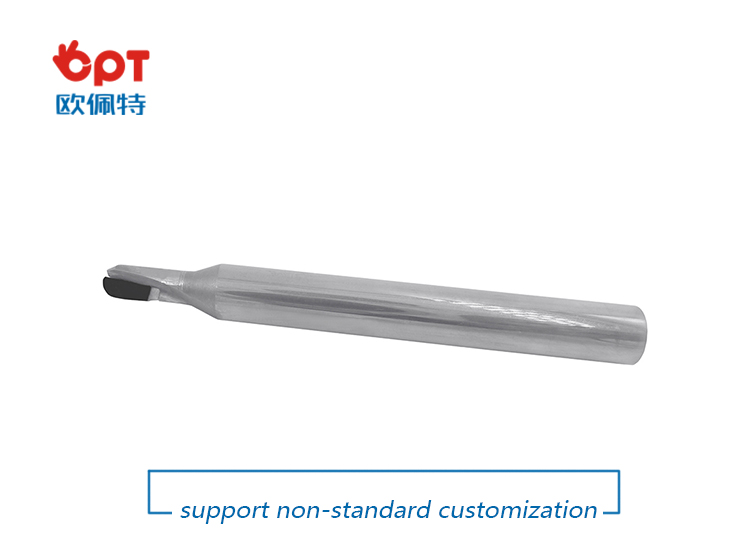
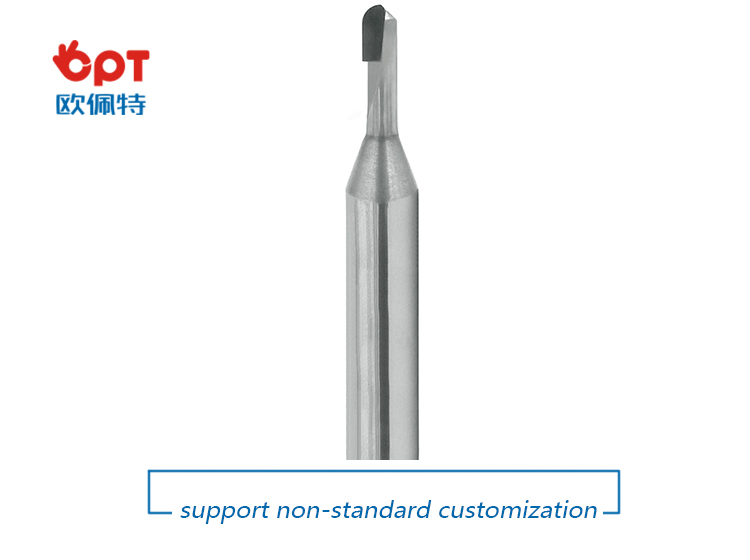
PRODUCTING PROGRESS:

PAYMENT AND DELIVERY:

PRODUCT EQUIPMENT :
+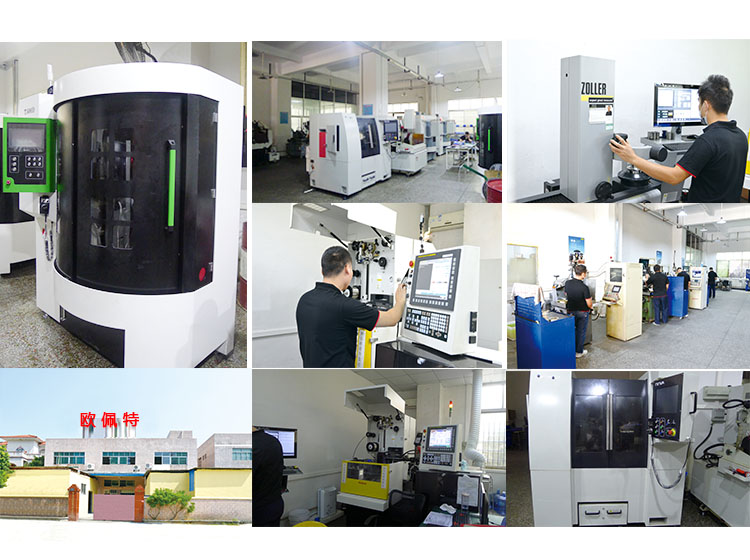
ABOUT US :
We are specialize in manufacturing PCD diamond tools and Carbide tools. Our major product inclulde PCD Inserts , PCD Reamers , PCD End Mills, PCD Taps, Cabide Inserts, Carbide Drills , Carbide Reams, Taps etc.,
We also offered customized cutting tools per drawings, and provide package according to customer requirements. We manufacture a series range of cutting tools for machining of Cast iron, Aluminium alloy and Non-Ferros metal, it is widely used in all major sectors like Automobiles, Engineering, Aerospace, Aviation and 3C industry. Premium quality of raw material is used in the production and strict examination during processing with advanced equipment, so our client are satisfied with our reliable quality and on-time delivery.
Our best selling of cutting tools include PCD Inserts, PCD End Mill, PCD Ball Nose Mill, PCD Reamer, Carbide Taps , Carbide End Mill, Special Form Cutter and many more. For these years we have been made a large forward in the technologies of manufacturing cutting tools. With high quality on performance and price, our product sells well both on domestic and overseas market. And we will always focus on the quality and best service, to make long business relationship.

quanlity control:
We have dedicated team of quality control and precise equipment to keep good and stable performance for our products and processing services.

Ball Nose End Mills,Ball End Milling Cutter,Bull Nose Cutter,PCD Ball Nose End Mills
OPT Cutting Tools Co., Ltd. , https://www.optdiamondtoolss.com